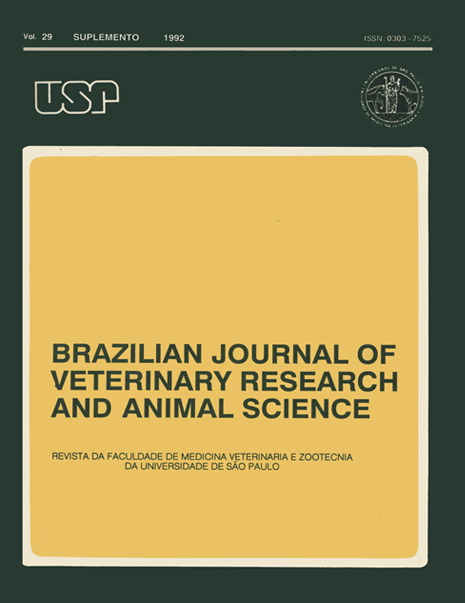The excretory system of the liver in wild animals. VI. Biliary ducts of the great anteater (Myrmecophaga tridactyla)
DOI:
https://doi.org/10.11606/issn.1678-4456.bjvras.1992.52000Keywords:
Anatomy of wild animals, Biliary ducts, Liver, Great anteaterAbstract
The systematization of the biliary ducts of the liver of the great anteater (Myrmecophaga tridactyla) is analyzed. The ductus choledocus has no affluents and results from the union of the ductus cysticus and the ductus hepaticus always arises from theramus principalis dexter and the ramus principalis sinister, and is seen without tributaries in three cases, receiving them meanwhile in the other one. The ramus principalis dexter is made up of the ramus lateralis lobi dextri and the ramus medialis lobi dextri. The ramus principalis sinister is formed by the ramus lateralis lobi sinistri, the ramus lobi sinistri and the ramus lobi quadrati.Downloads
Download data is not yet available.
Downloads
Published
1992-12-03
Issue
Section
BASIC SCIENCES
License
The journal content is authorized under the Creative Commons BY-NC-SA license (summary of the license: https://
How to Cite
1.
Miglino MA, Prada IL de S, Borelli V, Arantes IG, Souza WM de. The excretory system of the liver in wild animals. VI. Biliary ducts of the great anteater (Myrmecophaga tridactyla). Braz. J. Vet. Res. Anim. Sci. [Internet]. 1992 Dec. 3 [cited 2024 Jul. 26];29(supl.):353-7. Available from: https://www.revistas.usp.br/bjvras/article/view/52000





